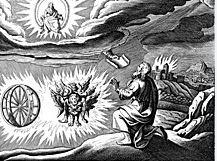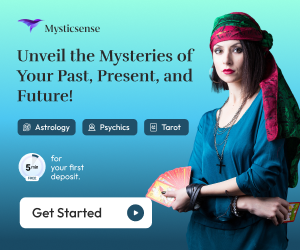
The term "Merkava Mysticism" refers to an ancient form of Jewish mystical thought and practice, distinct from the more widely known Kabbalah. The word "Merkava" (Hebrew for "chariot") is used in this context to refer to the mystical vision of the Divine Chariot, described in the Book of Ezekiel in the Hebrew Bible (Ezekiel 1). Merkava Mysticism is sometimes also called "Chariot Mysticism" or "Ezekiel Mysticism" because it centers on the prophet Ezekiel's vision of the Divine Throne and the angelic beings that accompany it.
Key Elements of Merkava Mysticism
-
The Vision of Ezekiel:
-
Merkava Mysticism is primarily based on Ezekiel’s vision of the Divine Chariot (Ezekiel 1), which describes a mystical and complex experience involving a chariot pulled by four living creatures with wheels within wheels, surrounded by fire, and attended by angels. This vision has been interpreted as a profound mystical experience, where Ezekiel encounters the Divine Presence (the Shekhinah).
-
-
Ascension to the Divine Throne:
-
Practitioners of Merkava Mysticism believed that through specific meditative practices, it was possible to ascend spiritually to the Throne of God, as Ezekiel had. The mystic would journey upward, passing through multiple realms or heavenly gates, to experience an intimate encounter with the Divine.
-
This ascent was seen as a means of direct communion with God, akin to the experience of prophecy or divine revelation.
-
-
Theological and Mystical Concepts:
-
The Merkava (Chariot): In this mystical tradition, the chariot represents the vehicle of the divine presence, a metaphor for the spiritual ascent required to approach God.
-
Angels and Divine Beings: The four living creatures described in Ezekiel’s vision, each with four faces (man, lion, ox, and eagle), are often interpreted as powerful angelic beings. In Merkava Mysticism, they are seen as symbolic of the divine realms that must be passed through during the mystical ascent.
-
The Throne of Glory (Kisei HaKavod): This concept refers to the Divine Throne, a central feature of Merkava Mysticism. The mystic seeks to gain access to the presence of God on His Throne, which is a rare and exalted spiritual experience.
-
-
The Role of Meditation and Purification:
-
Merkava Mysticism often involves rituals, prayers, and meditative techniques designed to prepare the practitioner for spiritual ascent. These practices were aimed at purifying the soul, transcending worldly distractions, and attaining divine vision.
-
The texts associated with Merkava Mysticism include mystical prayers, angelic invocations, and techniques for visualization and concentration. These practices were considered dangerous, as they were believed to involve direct contact with the divine and required the practitioner to be pure and spiritually prepared.
-
-
Secrecy and Exclusivity:
-
Merkava Mysticism was traditionally considered an esoteric and secret tradition. It was often only taught to advanced students who were prepared to undergo intense spiritual discipline.
-
The teachings were passed down through secret oral traditions and mystical texts. Because the practices were seen as powerful and potentially dangerous, they were kept hidden from the general public, and access was restricted to a select few.
-
-
The Hechalot Texts:
-
Hechalot (meaning “palaces” in Hebrew) texts are a collection of mystical writings that describe the ascent to the divine throne and the accompanying mystical experiences. These texts focus on the visions of divine palaces and the purification rituals necessary to approach the presence of God.
-
They detail the realms the mystic must pass through, the angels guarding each realm, and the rituals necessary to approach the Throne of Glory.
-
-
Later Influence:
-
Although Merkava Mysticism was initially focused on ascetic and meditative practices in ancient Judaism, it influenced later Jewish mysticism, including Kabbalah. In Kabbalah, the concept of divine ascent and the experience of interacting with divine beings evolved, though Kabbalah is more focused on understanding the structure of the universe, divine emanations (the Sefirot), and the nature of God’s creation.
-
Some aspects of Merkava Mysticism also found resonance in early Christian mysticism and Islamic mysticism (Sufism), as these traditions also include visions of heavenly ascension and mystical communion with the Divine.
-
Key Texts in Merkava Mysticism
-
The Hekhalot Rabbati: A major text of the Hechalot tradition, describing the mystical ascent to the divine throne and the accompanying experiences.
-
The Hekhalot Zutarti: A shorter, more concise version of the Hekhalot teachings, focusing on the practice of ascension and interaction with angels.
-
The Merkavah Rabba: Another important text that provides detailed descriptions of the mystical practices and visions associated with the Merkava.
Conclusion
Merkava Mysticism is a deep and esoteric form of Jewish mysticism focused on spiritual ascent, divine communion, and the vision of the Divine Chariot described in the Book of Ezekiel. The practice was considered highly secretive and was traditionally reserved for advanced practitioners capable of undergoing rigorous spiritual purification. It has had a lasting impact on Jewish mysticism, particularly influencing the development of Kabbalistic thought, even as it remains distinct in its emphasis on direct divine encounters and the mystical ascension to the heavenly realms.

